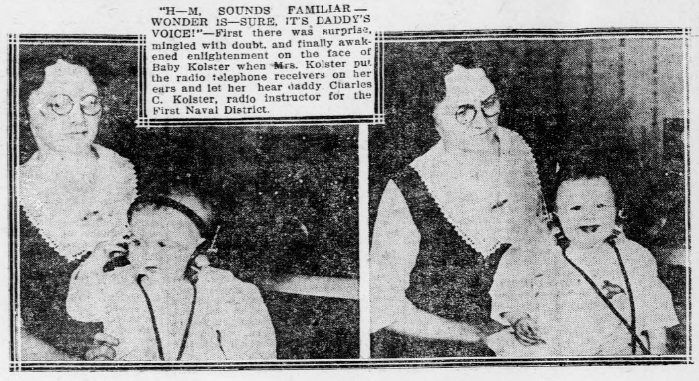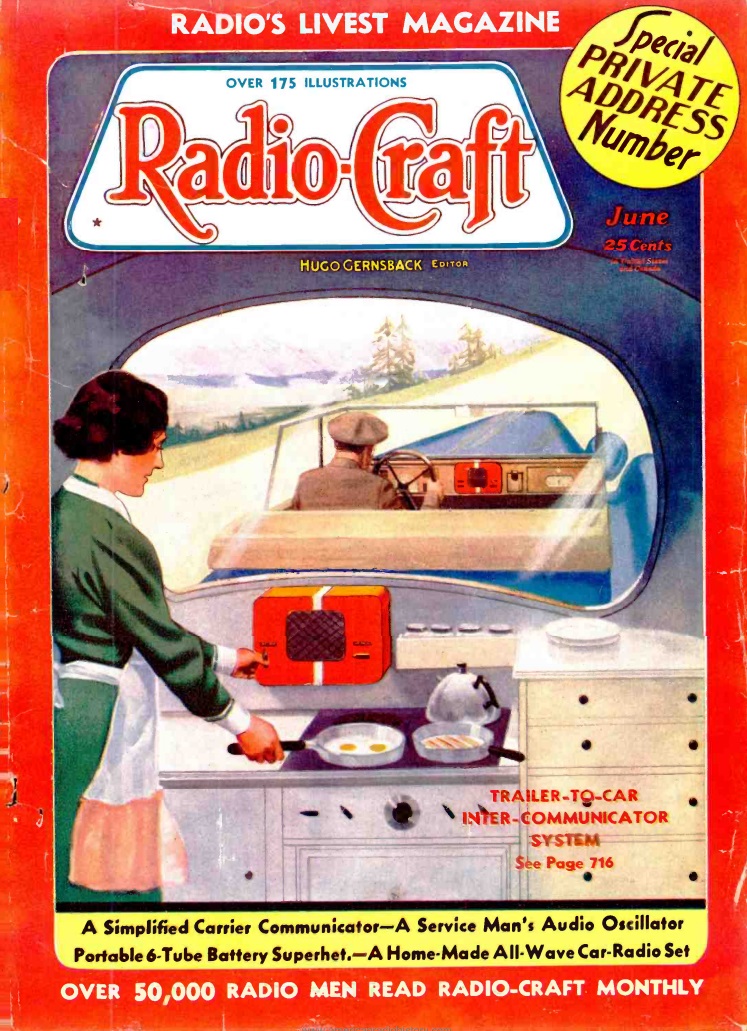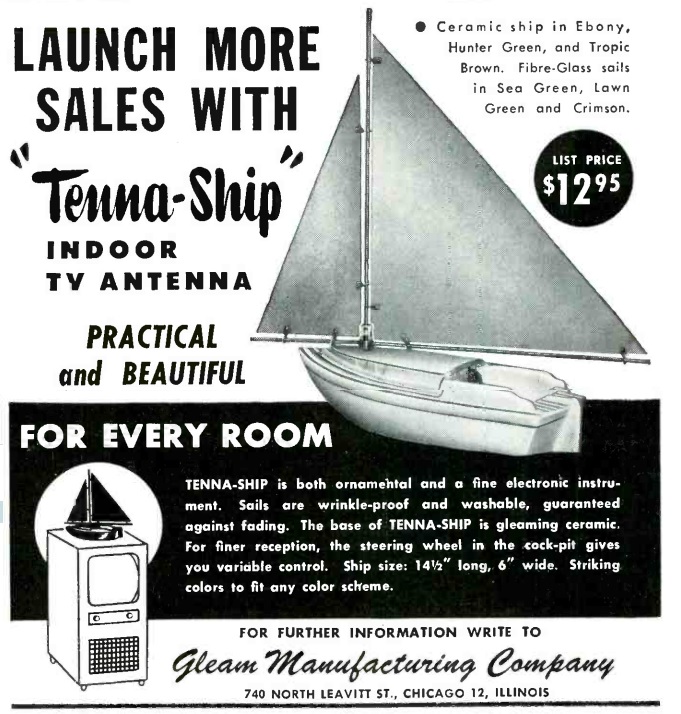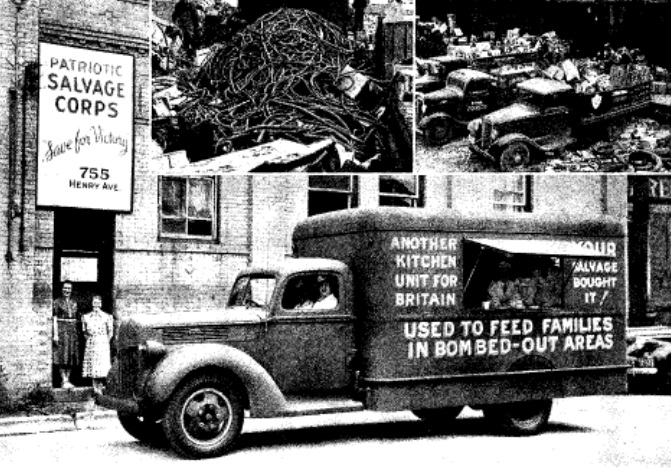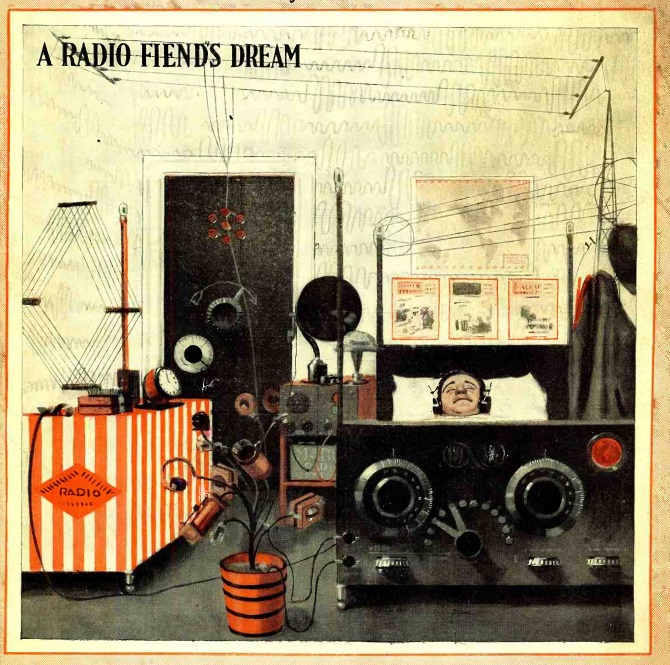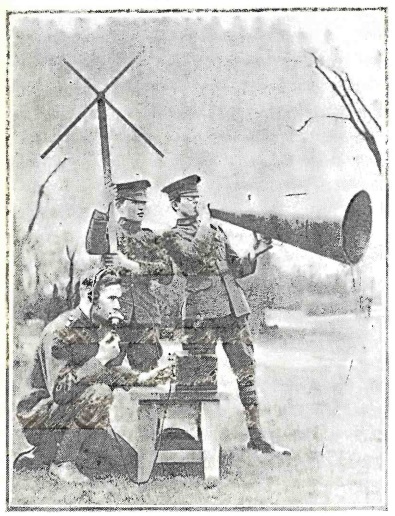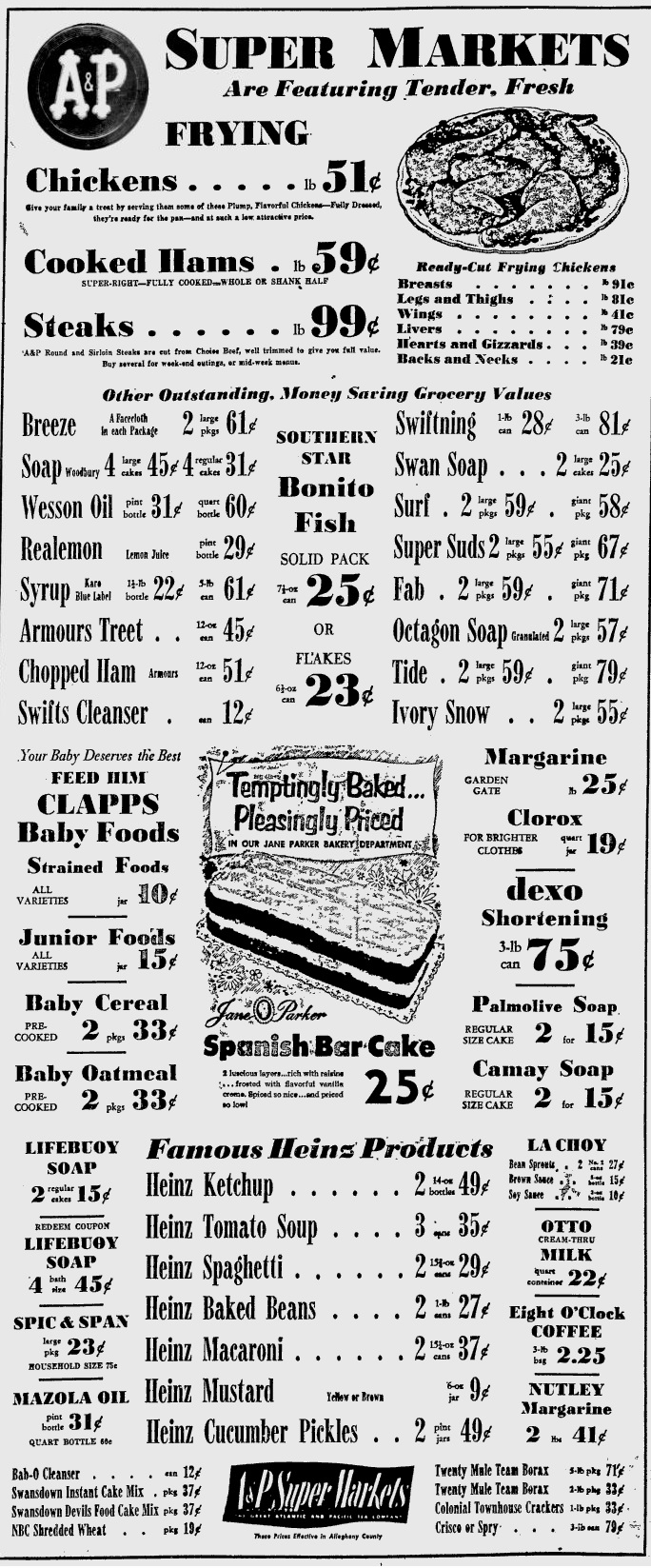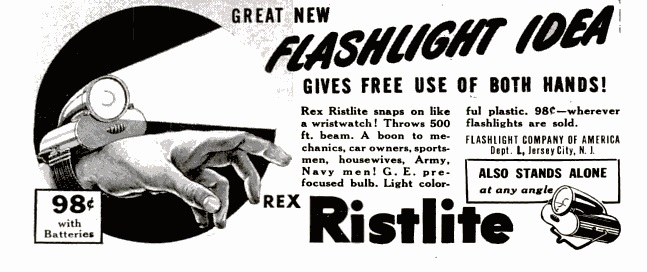 This ad appeared in Life Magazine 80 years ago today, June 22, 1942, extolling the virtues of the Rex Ristlite from the Flashlight Company of America of Jersey City, NJ. The light snapped on like a wristwatch, giving you full use of both hands. It was a “boon to mechanics, car owners, sportsmen, housewives, Army, and Navy men.” It sold everywhere that flashlights were sold for only 98 cents, including batteries. According to this online inflation calculator, that works out to $17.57 in 2022 dollars.
This ad appeared in Life Magazine 80 years ago today, June 22, 1942, extolling the virtues of the Rex Ristlite from the Flashlight Company of America of Jersey City, NJ. The light snapped on like a wristwatch, giving you full use of both hands. It was a “boon to mechanics, car owners, sportsmen, housewives, Army, and Navy men.” It sold everywhere that flashlights were sold for only 98 cents, including batteries. According to this online inflation calculator, that works out to $17.57 in 2022 dollars.

 It seems like a practical idea, although it has been largely supplanted by the headlamp, of the type shown at left. After all, if you need to look at something, then your head is going to be pointing in the right direction, so it makes sense to put the light there. On the other hand, having it on your wrist could be handy in many cases, so they had a good idea 80 years ago.
It seems like a practical idea, although it has been largely supplanted by the headlamp, of the type shown at left. After all, if you need to look at something, then your head is going to be pointing in the right direction, so it makes sense to put the light there. On the other hand, having it on your wrist could be handy in many cases, so they had a good idea 80 years ago.

 And fortunately, the same thing is available today, only better. And the price (including batteries) is almost the same as the 1942 price, adjusted for inflation, of course. Like everything else, it is available at Amazon, and you can see it pictured at right.
And fortunately, the same thing is available today, only better. And the price (including batteries) is almost the same as the 1942 price, adjusted for inflation, of course. Like everything else, it is available at Amazon, and you can see it pictured at right.
This one also includes a clock (with 24-hour display, as our readers will appreciate) and compass. It’s customary to wear a watch on your wrist, so the clock seems logical. And since it appears to be much smaller than the 1942 version, you can wear it in situations where you might need a light, rather than putting it on as needed. Many of the reviews state that the compass doesn’t work very well, although I suspect that it works well as long as it’s flat. As long as it’s magnetized and spinning freely, there’s really not much that can go wrong with a compass. So if you take it off an lay it on a flat surface, I imagine it will reliably point north. And if you click on the Amazon link or the picture, you’ll see that the cost, adjusted for inflation, is about the same as it was in 1942.
One big advantage of the modern version is that you don’t have to worry about batteries. It has a built-in lithium ion battery, and it comes with a micro USB charger. If the charger gets lost, you can use the same one you normally use with your cell phone.
Some links on this site are affiliate links, meaning that this site earns a small commission if you make a purchase after clicking the link.
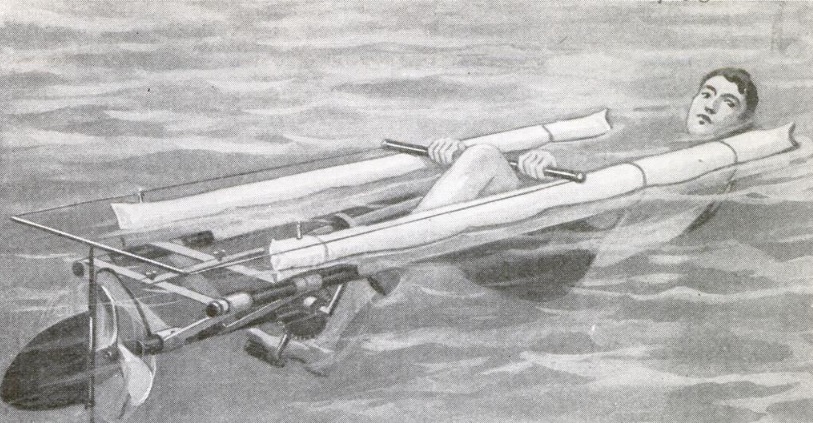 A hundred years ago this month, the June 1922 issue of Popular Mechanics showed this watercycle, invented by Edward Bellman of Evansville, Wisconsin.
A hundred years ago this month, the June 1922 issue of Popular Mechanics showed this watercycle, invented by Edward Bellman of Evansville, Wisconsin.
